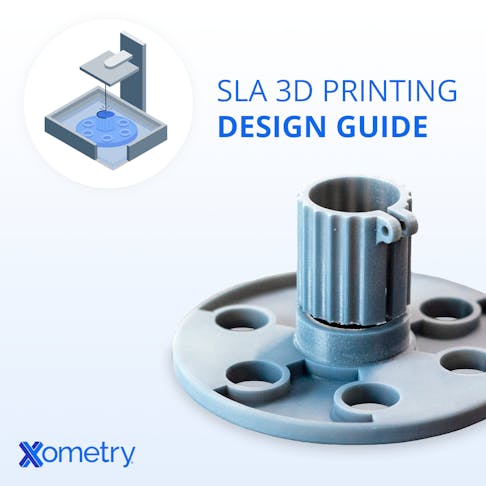Design Guide: Stereolithography (SLA) 3D Printing
SLA 3D printing is a highly versatile platform for making custom parts in prototype and production settings. Learn how to design for and use SLA on your next project with our free guide.
Download the Guide

Explore Stereolithography (SLA) – an additive manufacturing process using UV light to solidify liquid resin. Learn about different SLA types (laser-based, mSLA, DLP) and its benefits: high detail, smooth finishes, and precision. Discover Xometry's SLA standards, tolerances, and design guidelines. Review available SLA materials and finishes.
An Inside Look at the Table of Contents
Introduction
- What is Stereolithography?
- Different Types of SLA
- SLA Manufacturing Standards
- General Manufacturing Standards
- Tolerances and Resolution
Design Guidelines
- Wall Thickness
- Holes & Gaps
- Wire Features
- Overhangs & Bridges
- Engravings & Embossing
- Fillets & Drafts
Materials
- General Purpose
- Durable
- Clear
- Highly Stiff
- Specialty
Finishes
- Matte & Natural
- Strip & Ship
- Quick Clear
Additional Resources
- Material Comparison Charts
- Xometry Resources
About Xometry
Stereolithography (SLA) is a powerful 3D printing technology that produces extremely accurate and high-resolution parts that are capable of being used directly in end-use, low-volume production, or for rapid prototyping. Stereolithography 3D printing is a highly versatile platform for making custom parts in prototype and production settings, often acting as a stand-in for injection-molded plastic parts.
Xometry offers both standard and high-resolution options for fine detail parts, and can also print larger-sized parts and products, offering up to a 29-inch build area. In addition, Xometry's manufacturing partner network allows us to offer a larger variety of materials than other 3D printing companies - we offer a wide range of Accura-, Somos-, and Formlabs-branded materials.
